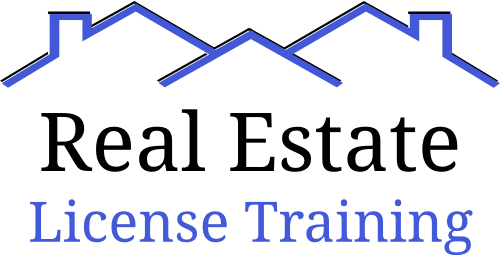So you want to become a mortgage loan officer in Vermont…
But don’t know how or where to begin…
We’ve got you!
Here, we’re going over the whole application process.
In this complete guide on how to become a mortgage loan officer (MLO) in Vermont, you’ll be able to walk through the steps with us.
So shall we?
How to Become an MLO in Vermont – The 5 Steps to Licensure
To get your Vermont MLO license, you’ll need to go through 5 steps. These are:
- Request an NMLS account
- Complete the required pre-licensure education (PE)
- Pass the SAFE Test
- Submit your MLO application
- Affiliate with a licensed employer
Doesn’t that sound easy?
It is, especially for those who already work for a licensed employer.
Easy or not, it’s important to know the full details.
So let’s get straight to it…
Step #1: Request an NMLS Account
Here’s the thing.
All your MLO transactions will be done through the Nationwide Mortgage Licensing System (or NMLS).
You can see why the first thing to do is request an NMLS account.
And don’t worry – this is as easy as creating any other social media account. So you can go through it pretty quickly.
Just make sure you don’t provide incorrect or misspelled info.
Click here to request an NMLS account.
When you already have an account, take note of your unique identifier number.
You’ll need this for quite a lot of things — enrolling for pre-licensure education, taking your MLO test, applying for an MLO license, getting a sponsorship request, MLO license renewal, etc…
NOTE: To find your unique identifier number, head over to your NMLS dashboard, select ‘Composite View’, then ‘View Individual’.
Step #2: Complete the Required Pre-Licensure Education (PE)
In Vermont, you’re required to complete at least 20 hours of pre-licensure education (also called PE).
The program must include the following:
| Course Topic: | Hours: |
| Vermont-Specific Electives (required by the Vermont Department of Financial Regulation – VT DFR) | 2 Hours |
| Non-Traditional Mortgage Lending | 2 Hours |
| Ethics (Consumer Protection, Fair Lending Issues, Fraud) | 3 Hours |
| Federal Law | 3 Hours |
| General Mortgage Loan Electives | 10 Hours |
Say you already have a packed schedule.
Well, the great news is that you can complete your hours online.
Here are some of our highly recommended online PE providers approved by the NMLS:
Here you can find a complete list of NMLS-approved PE providers.
Once you finish your education, NMLS will indicate whether or not you complied with the PE requirement.
NOTE: Your pre-licensure education is only valid for 3 years. Make sure you apply for your MLO license before that time or else you’ll have to retake it.
Step #3: Pass the SAFE Test
Next up is to take the licensing exam.
In Vermont, you may choose one of three tests:
- National and Vermont State Components of the SAFE Test
- National and Stand-alone UST components of the SAFE Test
- National Test Component with Uniform State Content
Whichever one you pick, you must register to sit for it through the NMLS.
Here is how:
- Go to the ‘MLO Testing & Education’ tab and choose the ‘Create a New Test Enrollment Window’.
- Select the test of your choice and add it to your cart.
- Review and accept the Candidate Agreements.
- Pay the exam fee of $110.
- Schedule your test appointment with Prometric (this is the official test administrator).
For the test, you’ll need to answer 120 items in around 3 hours.
To pass, you need to answer at least 87 questions right — that’s a 75% score.
NOTE: Out of the 120 questions, only 115 are scored. This is because 5 items are only pre-test questions. However, you won’t know which ones are scored and which ones aren’t.
Step #4: Submit Your MLO Application
Now you can finally apply for your VT MLO license.
And again, you can do that straight from your NMLS account.
Here’s how:
- Generate your Individual Form MU4 by going to the ‘Filing’ tab and clicking the ‘Individual’ and then the ‘Request New/Update’ buttons.
- Fill out the license registration details. You’ll need to select ‘Vermont’ as your state and ‘Mortgage Loan Originator’ as your license. NOTE: If you are already employed, you can ask your employer what other states you’re going to work in.
- Provide your personal details. This will include residential history and employment history.
- Answer disclosure questions. For any ‘yes’ answers, you need to give an explanation and any supporting document(s).
- Request a Criminal Background Check (CBC). If you need to submit new prints, you’ll have to make an appointment with the NMLS Fieldprint.
- Provide demographic information for your CBC.
- Request a Credit Report. You must also turn on the icon at the top right corner to generate your Identity Verification Process (IDV).
- Go through the IDV for your Credit Report.
- Check if all your information is correct.
- Submit and attest your MLO application.
- Pay the required fees:
- NMLS initial licensing fee – $30
- Vermont licensing fee – $50
- Investigation fee – $50
- CBC fee – $36.25
- Credit Report fee – $15
- TOTAL – 181.25
HOLD UP!
There is one thing you need to submit outside the NMLS.
This is a completed checklist.
Send this right after you submit your NMLS application to the address below:
For U.S. Postal Service:
Vermont Department of Financial Regulation
Banking Division
89 Main Street
Montpelier, VT 05620-3101
For Overnight Delivery:
Vermont Department of Financial Regulation
89 Main Street, 3rd Floor
Montpelier, VT 05602
Step #5: Affiliate with a Licensed Employer
Your MLO application won’t be approved until you’re affiliated with a Vermont-licensed employer.
If you’re already employed, then easy.
Simply have your employer request sponsorship through NMLS.
If not employed, then you should go out and look for employment.
NOTE: Your licensed employer’s company address should be within reasonable commute time from your residence. So don’t look somewhere too far away.
Once you get hired, have your new employer request sponsorship.
Also, you have to edit your Individual Form MU4 and add the employment details and address to it.
Now, the VT DFR will review all sponsorship requests.
If they accept the request, then you will receive your MLO license and can start practicing.
And that makes you an official mortgage loan officer in Vermont.
CONGRATS!
Frequently Asked Questions About How to Become a Mortgage Loan Officer (MLO) in Vermont
Can I Take the SAFE Test Online?
Yes!
However, only some are eligible to take the test with an online proctor.
When you schedule the online test, you’ll be required to submit valid reasons for this option.
Additionally, you’ll have to submit to various inspections and download apps for your chosen device.
You can check the Online Proctored Test system requirements here.
What Should I Know About the SAFE Test?
Here are some reminders for taking your SAFE test:
| In-Person | Online |
| Arrive 30 minutes early at the test center. | Prepare your examination room and computer. |
| Bring valid government-issued identification: *Driver’s license *Passport *Military card | Install the necessary apps on your computer. Download the ProProctor App for Windows. Download the ProProctor App for Mac OS. |
| Deposit all your belongings before going into the examination room. Do not attempt to sneak prohibited items in, as it may result in forfeiture, penalties, and further investigation. Calculators will be provided. | Declutter your environment and keep any of your prohibited belongings in another room. Do not attempt to sneak prohibited items in, as it may result in forfeiture, penalties, and further investigation. Calculators will be provided. |
| Get your photo taken at the registration counter. | You must be alone. |
Failure to show up on time will result in forfeiture of both the schedule and the test fee. You will need to enroll and pay again for the exam.
Should you wish to make changes to your schedule, you must do so at least two business days before your original appointment. Late cancellations will incur penalties.
Do I Need a College Degree to Become an MLO in Vermont?
Not necessarily. A high school diploma or equivalent GED will do.
However, a lot of Vermont-licensed mortgage employers are looking to hire MLOs with a Bachelor’s degree in a related field.
So if you want to stand out among the rest, it’s a good idea to work on this, too.
How Much Does an MLO Earn in Vermont?
The salaries of each MLO in Vermont will vary greatly. This is because it all depends on the company, the location, the workload, the experience, and many more things.
But to give you an idea, the average MLO earnings in the state is $71,587 (as of September 2023). That means most MLOs earn around $34 per hour.
Moreover, the earning range can go from lows of $24,000 to highs of $100,000 a year.
Conclusion
That is how to become a mortgage loan officer (MLO) in Vermont.
It was easy, right?
You just need to follow the steps one by one.
If you do that, then you’ll soon be on your way to becoming an official MLO in the state.
So what are you waiting for?
Go ahead and get started today!

